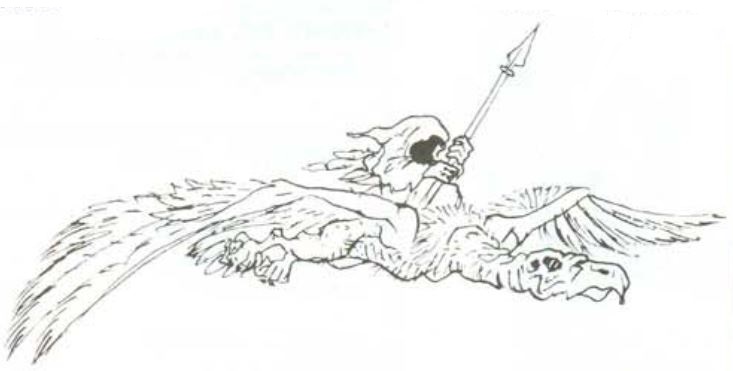Carrion for C&C
Let’s take some undead monsters from the 1989 Warhammer Fantasy Roleplay (WHF) and adapt them to Castles and Crusades, to include WHF’s idea that undead are subject to instability.
Undead Instability: Undead do not belong on the Material Plane. Some of whatever gives unlife to what should be a dead thing comes from another plane of existence. Undead might be subject to instability. This is common with uncontrolled undead who venture outside of desecrated or unholy places. Undead directly controlled by a necromancer or similarly powerful master may also avoid instability. Otherwise, check for instability by rolling 1d8 when an undead creature:
- Is reduced to half or fewer hit points.
- Fails a saving throw versus a magical effect.
- Is affected by a turn undead attempt.
- Enters a consecrated or holy region.
1-2: The source of the undead’s power and the Material Plane separate. The undead becomes incorporeal and can longer use any of its physical attacks. Each round, there is a 50% chance the undead becomes unable to act at all. The undead may be harmed by magical attacks (including magic weapons) as normal. This effect is permanent; don’t check for instability again.
3-4: The source of the undead’s power and the Material Plane separate. The undead becomes incorporeal and can no longer use any of its physical attacks. The undead is reduced to 1 hit point per hit die (if lower than its current hit point total). The undead may be harmed by magical attacks (including magic weapons) as normal.
5: The source of the undead’s power and the Material Plane flux. The undead’s move is halved, and it suffers a -2 penalty to attack rolls and saving throws for 1d6 rounds. If normally struck only by magic weapons, the undead can be harmed by normal weapons during this time.
6: The flow of negative energy from the source of the undead’s power to the Material Plane reverses. Roll the undead’s hit dice, reading the result as damage. Intelligent undead suffer half damage from this effect.
7: The flow of negative energy from the source of the undead’s power increases. For 1d6 rounds, the undead’s move is doubled, and it enjoys a +2 bonus to attack rolls and saving throws. If normally struck only by magic weapons, the undead takes half damage from such weapons during this period. If normally struck by normal weapons, the undead takes half damage from such weapons during this period.
8: The flow of negative energy from the source of the undead’s power increases. For 1d6 rounds, the undead benefits from number 7 above. Furthermore, the undead regenerates 1d4 hit points per round during the same period.
Carrion
Size: Large (7 ft. tall, 20 ft. wingspan)
HD: 6 (d8)
AC: 14
Saves: P
Move: 20 ft., fly 90 ft.
Attacks: 2 Claws (1d6), 1 Bite (1d8)
Special: Darkvision 60 ft., Dive, Fear, Twilight Vision, Undead Instability
INT: Inferior
Alignment: Neutral Evil
Type: Undead (Extraordinary)
Treasure: 2
XP: 300 + 6/hp
From WHF 248: “Carrion were once great birds of prey inhabiting the northern fringes of the Worlds Edge Mountains. Now are scarcely recognizable, having been captured and warped by Chaos into the present form. These great, Undead birds now serve the forces of Chaos as aerial scouts and fighters. Occassionally, they will carry a rider – typically a small Chaos Goblin mutant armed with a lance and a bow. They cannot carry heavier riders.”
“Carrion are skeletal flying beasts, mostly birdlike but with membranous wings and tails, reminiscent of bats or pterodactyls.”
Combat: “In combat, Carrion attack with two claws and one bite per round.” In melee combat, Carrion cause fear (PH 175-176) in a 10-foot radius; a creature that makes its charisma check against this effect is immune to that Carrion’s fear for 24 hours. A Carrion’s rider is immune to this fear. A Carrion bearing a rider is not subject to undead instability.
Dive: A Carrion can dive at a foe, gaining a +4 attack roll bonus, but it must move at least 45 feet in one round to do so. A successful attack means the target takes damage from both claws. Furthermore, the target must succeed at a dexterity check to avoid being grasped in the Carrion’s talons. If the check fails, and the target weighs no more than 100 pounds, the Carrion picks up the target and carries into the air. If the victim manages to stab or otherwise harm the Carrion, it immediately drops the victim. A Carrion cannot carry off a target and carry a mount at the same time.


Leave a Reply